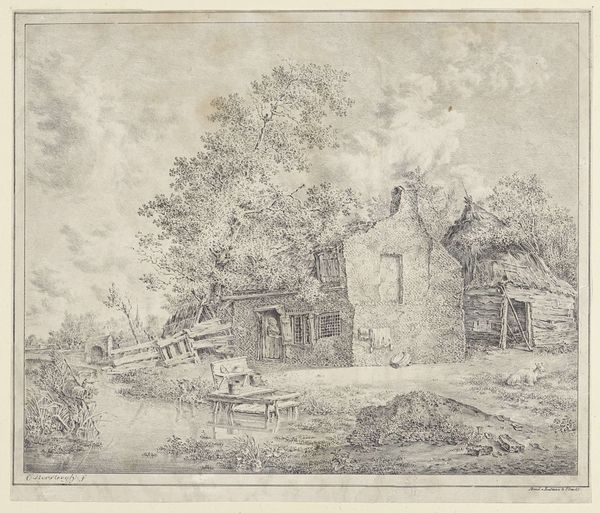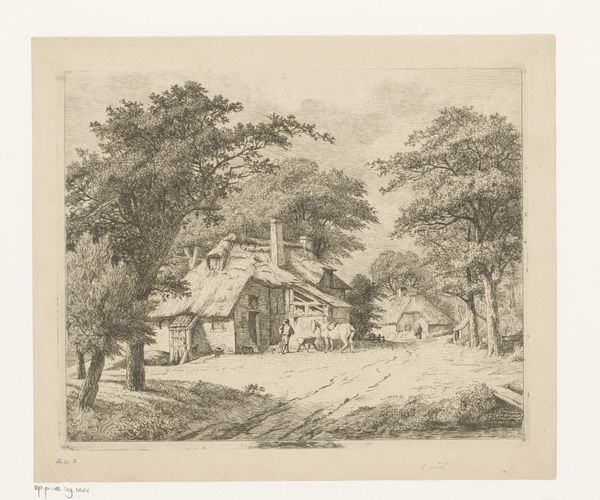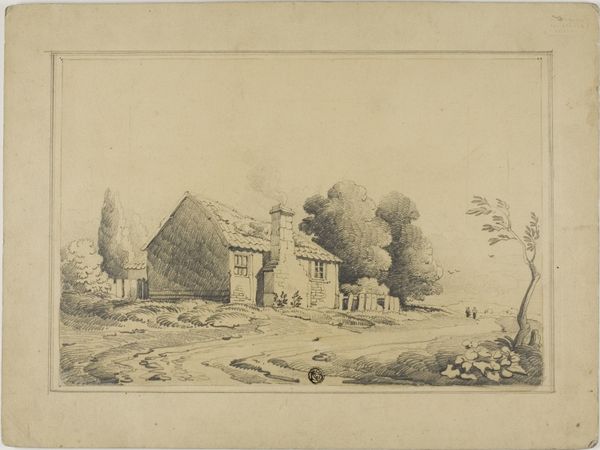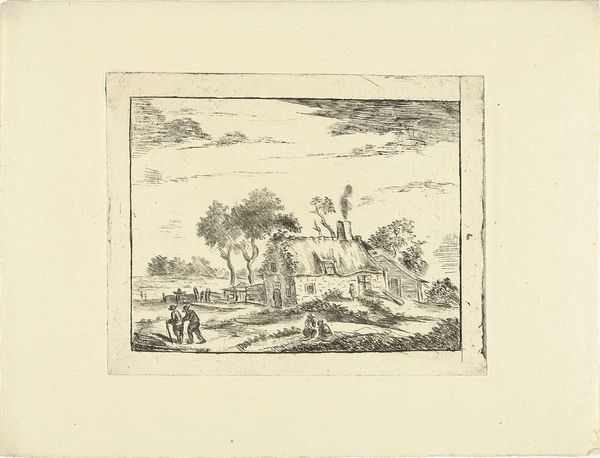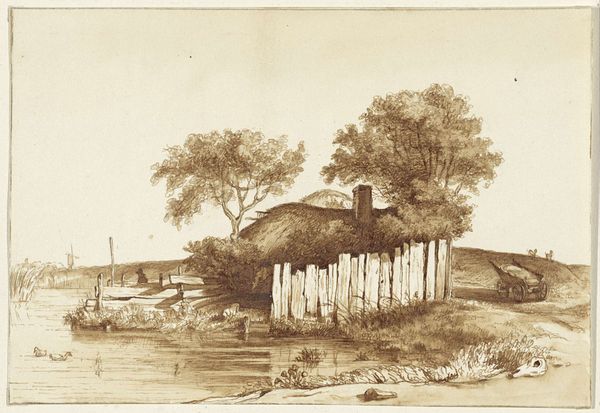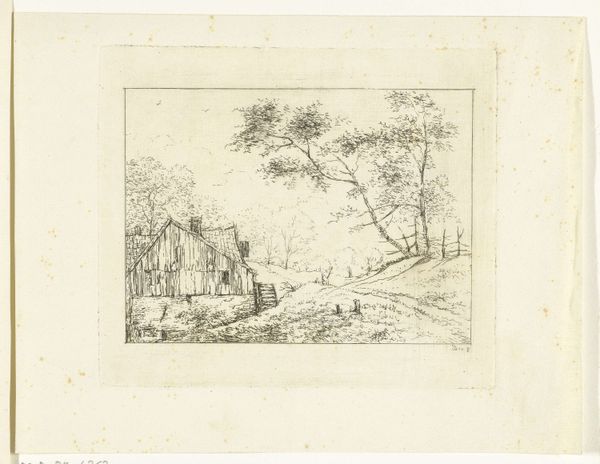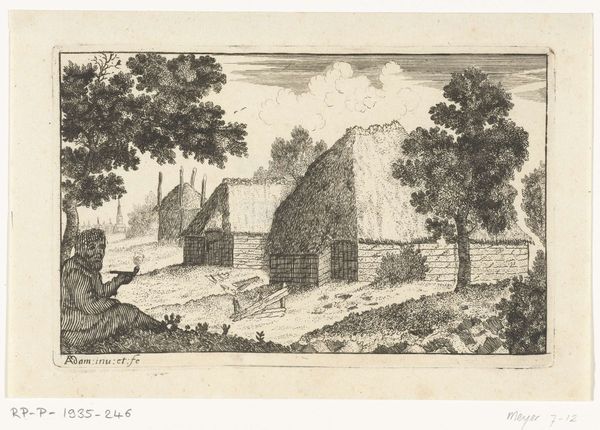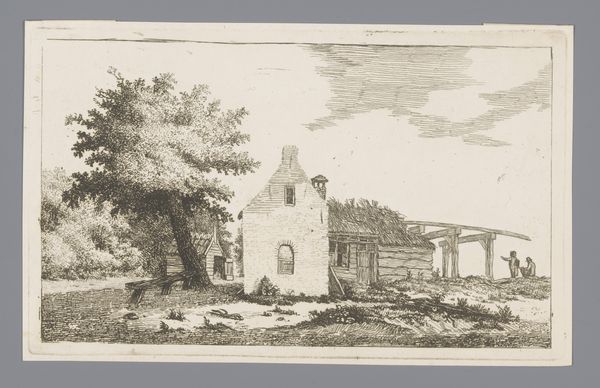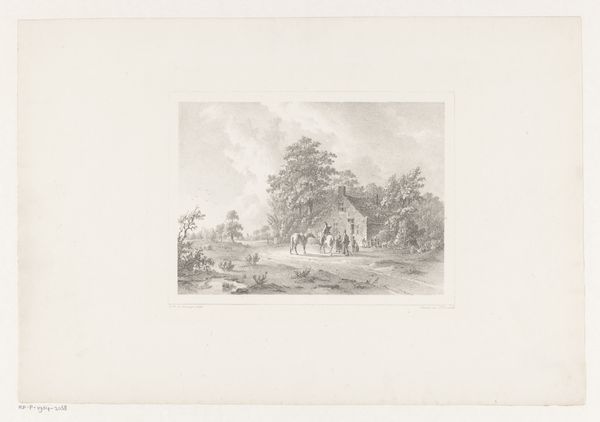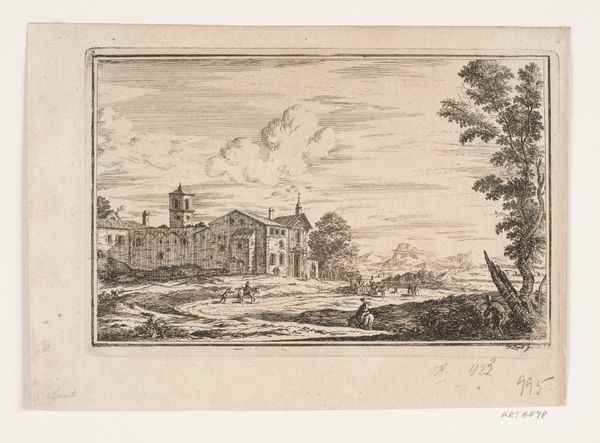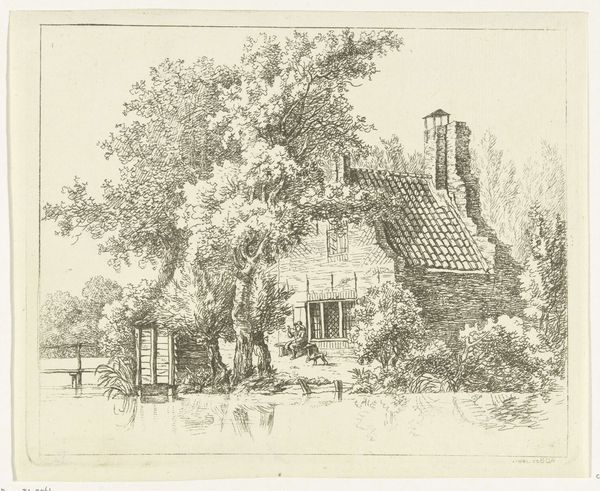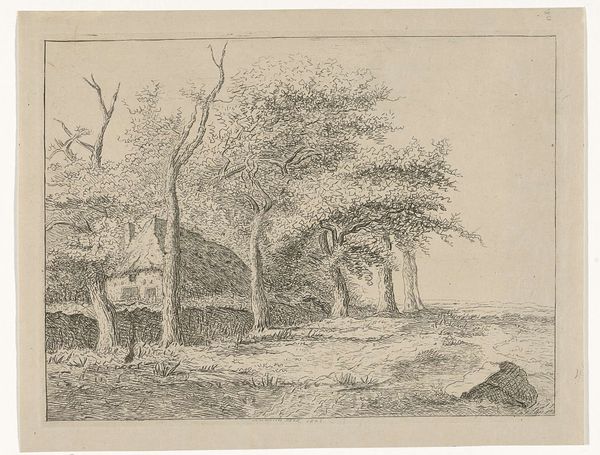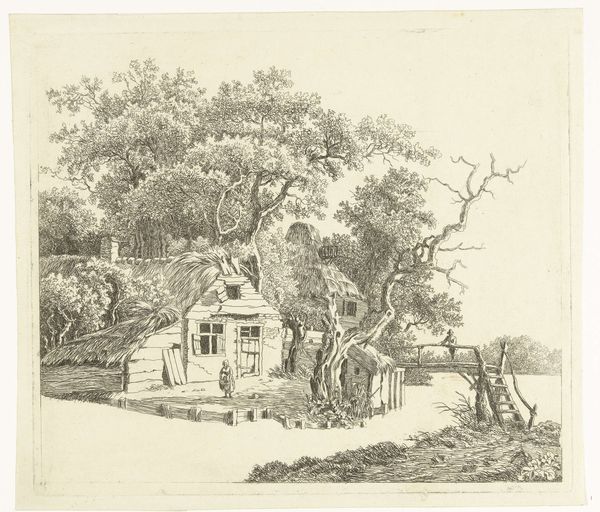
drawing, print, etching, paper, ink
#
drawing
# print
#
etching
#
landscape
#
etching
#
paper
#
ink
#
romanticism
Dimensions: height 120 mm, width 196 mm
Copyright: Rijks Museum: Open Domain
Curator: This is "Ruïne van herberg het Molentje aan de Amstel" by Anthonie van den Bos, created in 1811. It’s currently housed here at the Rijksmuseum. It’s an etching printed on paper. Editor: The texture is just incredible, all those delicate lines making up the details of the buildings and the trees! There's almost a ghostly quality to the way the scene is rendered. It’s all in shades of brown. Curator: Absolutely. Van den Bos utilizes etching, a printmaking process, to capture a very specific kind of ruin here. The etching would have involved carefully coating a metal plate and drawing through the coating. The materiality of that process would certainly dictate some qualities. Editor: I see a romantic fascination with the past, even in ruins like this building. It speaks to a broader trend of reflecting on the impermanence of things, doesn't it? What do we know of its public reception at the time? Curator: During this period, these kinds of landscapes, and these printmaking techniques, had become very popular, due in part to growing accessibility in terms of material production. It was no longer a pursuit reserved for the wealthy. Consider the politics of making the image accessible on paper. Editor: It's fascinating how the method of reproduction shaped the circulation of imagery and accessibility in a politically turbulent moment, making it more democratic. Do we know more about Van den Bos himself? Curator: He's part of a broader artistic movement responding to political and social upheavals. These images spoke to ideas about Dutch identity, reflecting a sense of pride, maybe even some anxiety regarding a changing society. The choice of such commonplace, unidealized subject matter becomes significant. Editor: I hadn't thought of it that way, this piece then is really tied to ideas around cultural memory. Thinking about materiality, production, distribution and accessibility... that all has something to say about both craft and national narrative. Curator: Exactly! It prompts one to contemplate both artistic process and also Dutch social history in the early 19th century. Editor: Thanks! I’ll certainly never look at a simple landscape etching the same way again!
Comments
No comments
Be the first to comment and join the conversation on the ultimate creative platform.
